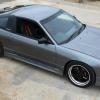How Much Of A Difference Higher Lift Makes ? + Camshaft Duration
Announcements
-
Similar Content
-
Latest Posts
-
Any idea why the shifter stopped working randomly, but would start working and then stop again on the next lap?
-
thanks for the responses lads, ended up getting a NA Rb25DE NEO head off marketplace for $1200 and porting out the head and putting in supertech valves, pray she works..
-
By robbo_rb180 · Posted
Congrats mate, great result. Mega lap, can't wait to see how you go at WTAC. -
By Dose Pipe Sutututu · Posted
That turbo doses well, I had one before. Gave more of a bus dose lol... Suuuuuu tuuuuuuuuuuuuuuuuuuu LOL
-









Recommended Posts
Create an account or sign in to comment
You need to be a member in order to leave a comment
Create an account
Sign up for a new account in our community. It's easy!
Register a new accountSign in
Already have an account? Sign in here.
Sign In Now